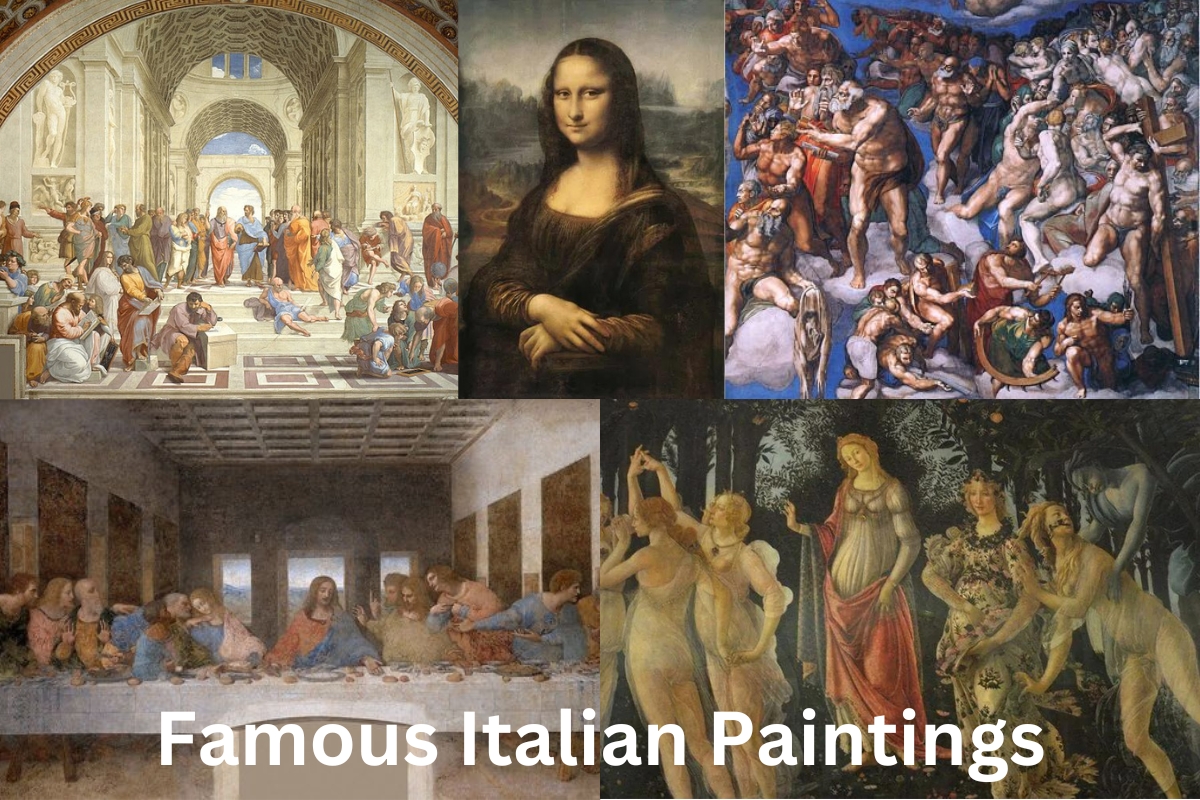Many significant artistic developments may be traced back to Italy, which has also produced many outstanding artists in the disciplines of painting, architecture, and sculpture over the centuries.
Although most of Italy’s most well-known paintings date back to the Renaissance, several masterpieces from earlier and later periods deserve recognition as well.
The majority of the artists on our list of renowned Italian paintings are household names, how many of them do you already know.
Famous Italian Paintings
1. Mona Lisa – Leonardo da Vinci
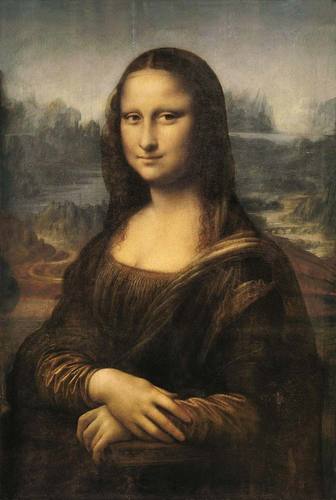
The Mona Lisa is arguably the most well-known artwork in the world, and her grin is instantly recognizable around the globe.
Comparatively, Da Vinci has fewer finished paintings to his name than other prolific artists of his period.
Even still, every one of his works is a masterpiece, a label reserved for only a select few artists.
Reportedly depicting the wife of a wealthy Florentine merchant named Francesco del Giocondo, Lisa Gherardini, the Mona Lisa is a half-length picture.
The Mona Lisa is on permanent exhibit at the Louvre after being donated to the French people; being public property, it will never be put up for auction.
An Italian worker once stole it and returned it to Italy, insisting that it rightfully belonged there. Finally, he was apprehended, and the stolen artwork was restored to the Louvre.
Every day, people wait in huge lines just to catch a glimpse of her radiant grin.
If not the most famous painting ever, she is certainly the most renowned Renaissance woman.
2. The School of Athens – Raphael
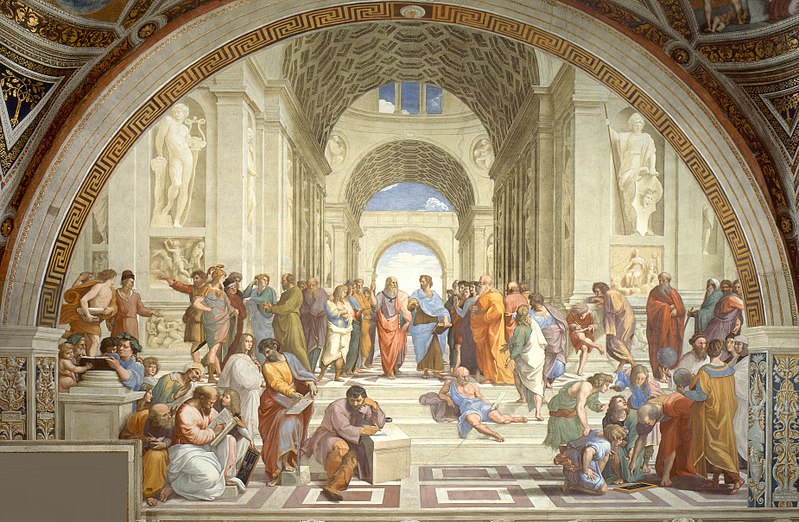
Raphael’s fresco The School of Athens hangs in the Apostolic Palace in the Vatican and dates from 1509–1511.
Practically every major Greek philosopher is represented in this artwork.
Also Read: Famous Paintings in the Vatican
Painting done in the Stanza della Segnatura, located on the second floor of the Vatican Palace’s North Wing.
It is one of four enormous frescoes in the room; the others depict the four pillars of human knowledge: the School of Athens, Justice, Philosophy, and Poetry.
The composition is primarily reliant on perspective, with the focus falling on Plato on the left and Aristotle on the right.
There are a total of fifty figures in the painting, twenty-five on the left representing Plato and twenty-five on the right representing Aristotle.
3. The Birth of Venus – Sandro Botticelli
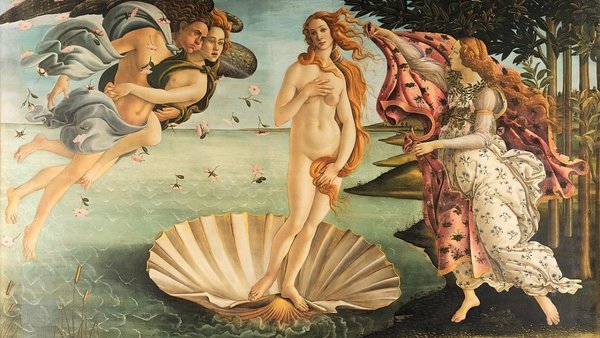
The Birth of Venus, one of Botticelli’s finest Renaissance works of art, depicts the Roman goddess Venus being delivered to land on a large shell after being born fully grown at sea.
Sandro Botticelli also created another well-known Renaissance masterpiece, the Primavera, which also features a legendary image.
The Medici, a prominent banking dynasty in Florence, were also significant benefactors of the arts, and they commissioned both of these masterpieces.
The majority of artworks up until this point would have been painted on wood panels, however the Birth of Venus is a tempura on canvas painting.
Canvas was superior to wood because wood warped easily in damp environments, but canvas did not.
4. Venus of Urbino – Titian
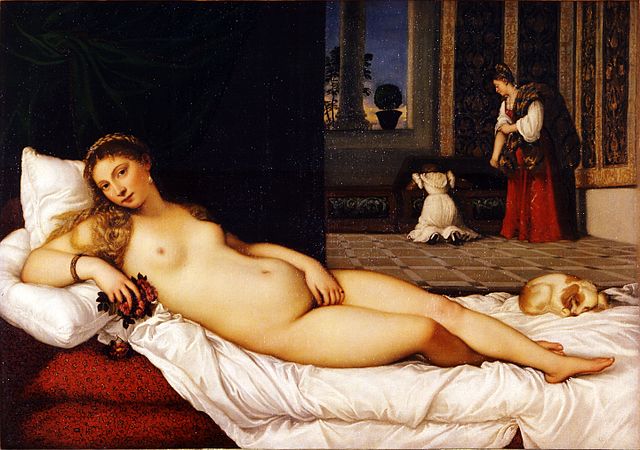
An oil painting, sometimes known as Reclining Venus or Venus of Urbino, The Venus of Urbino was likely begun in 1532 or 1534, completed in 1534, and sold in 1538.
It depicts a young woman, typically identified as Venus, reclining nudely on a plush Renaissance-era sofa or bed. The Gallery of the Uffizi in Florence is currently displaying it.
The pose is based on Giorgione’s Dresden Venus, which landscape Titian completed. By depicting her in an intimate setting, having her engage with the viewer, and highlighting her feminine allure, Titian has domesticated Venus in this picture.
5. The Last Supper – Leonardo da Vinci

The Last Supper, painted by Leonardo da Vinci, shows the last meal shared by Jesus with his twelve apostles and is a religious scenario typical of many great Renaissance works of art.
It’s not a traditional fresco because Leonardo painted it on canvas instead of a wall, and he used oil paints instead of his usual watercolors.
Oil’s lengthy drying time is supposed to have been one of Leonardo’s favorite features, since it allowed him to take his time and think carefully about his designs.
The natural wetness that permeates through most stone wall constructions was a problem for Leonardo because he wanted to employ oil paints.
He responded by covering the area in a double coat of gesso, mastic, and pitch.
The painting has been restored numerous times over its long existence.
Because of both accidental and accidental damage, the oil painting’s original varnish has mostly peeled off.
6. Primavera – Sandro Botticelli
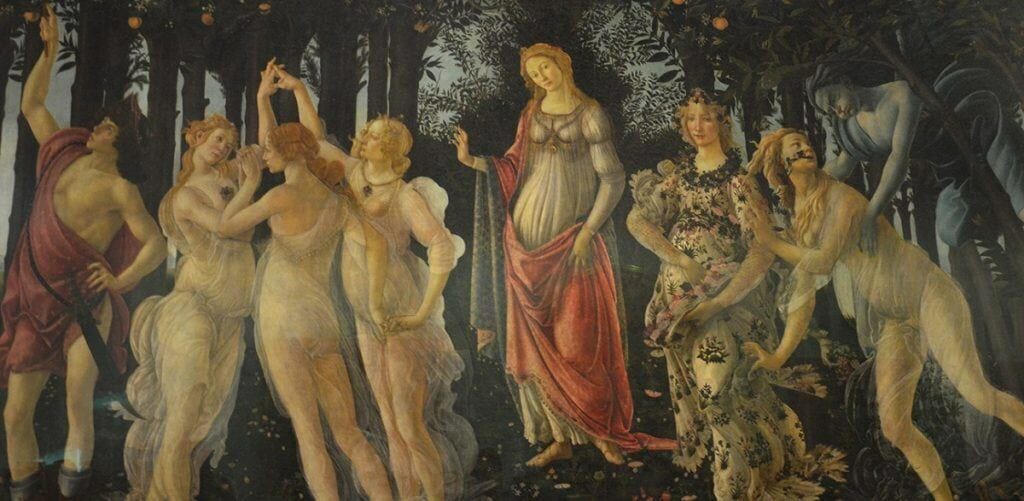
The artwork often known as “Allegory of Spring” is thought to have been created by Sandro Botticelli around 1482 under the title Primavera, which translates to “Spring” in English.
Many art historians and critics have argued over whether or not the picture depicts the change of the seasons or a legendary allusion.
Not only because of its significance, but also because of the bold use of color that Botticelli employed at the time, this painting is often regarded as among the finest examples of Renaissance art.
7. Sistine Madonna – Raphael
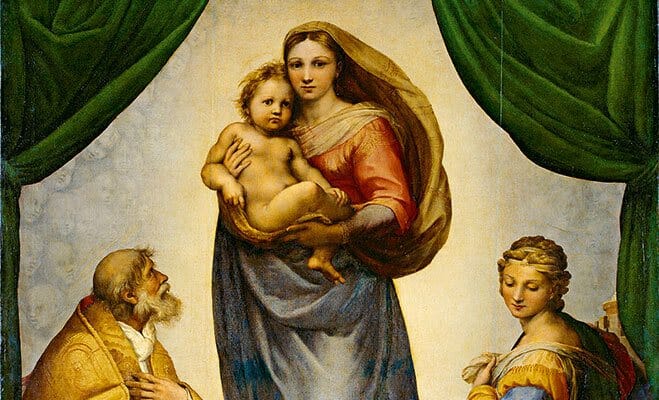
Raphael’s death was only a few short years after he completed the Sistine Madonna, making it one of his final great works of Renaissance art.
In the picture, Mary is shown cradling Jesus, with Saints Sixtus and Barbara standing at either side of her. Cherubs, standing in the foreground, look up at Mary from below.
The Benedictine monks at Piacenza’s San Sisto Monastery commissioned the painting and hung it prominently next to the altar.
In 1754, it was presented to German King Agustus III of Saxony, and its presence sparked heated controversy about the boundaries between art and religion in that country.
Following WWII, the picture was relocated to Moscow; it wasn’t until 1955 that it made its way back to Germany.
In terms of light and shadow, it is widely regarded as one of the most iconic of the Virgin Mary paintings from the Renaissance.
8. Transfiguration – Raphael
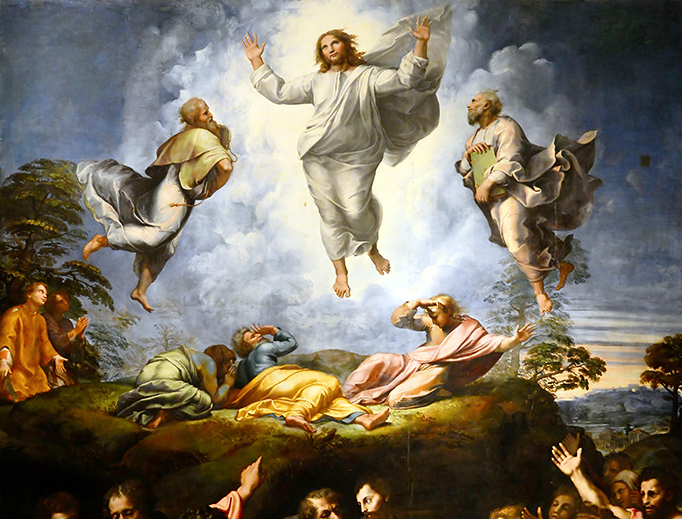
The Transfiguration, Raphael’s final painting, is a brilliant example of the Italian High Renaissance. Until his death in 1520, Raphael labored on an altarpiece for the French cathedral of Narbonne, at the request of Cardinal Giulio de Medici, who would later become Pope Clement VII (1523–1534).
This masterpiece of the Renaissance style beautifully illustrates the central idea of the painting, which is to show how Christ’s life and teachings affected humanity.
The combination of warm and cool tones in this artwork is both visually stimulating and engaging.
There is not a lot of depth or shade in The Transfiguration because it was painted in the traditional fresco style. Raphael makes up for it with his vivid portraits of people whose lives Christ’s message has changed.
9. The Beheading of St John the Baptist – Caravaggio
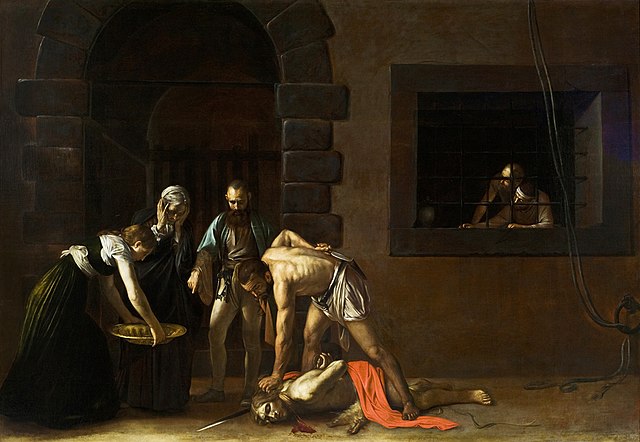
A large oil painting measuring 3.7 m by 5.2 m, titled “The Beheading of Saint John the Baptist,” depicts the martyrdom of John the Baptist. Currently you may find it at the Oratory of St. John the Co-Cathedral in Valletta, Malta.
The huge canvas employs chiaroscuro to highlight the reds and golds characteristic of the Baroque style. The artwork depicts the execution of John the Baptist, with a maid girl standing by with a golden platter in preparation to receive the martyr’s severed head.
Another woman, either Herodias or a bystander who has noticed the execution is being carried out incorrectly, watches in startled silence as the jailer gives orders and the executioner draws his knife to finish the beheading.
10. The Calling of St Matthew – Caravaggio
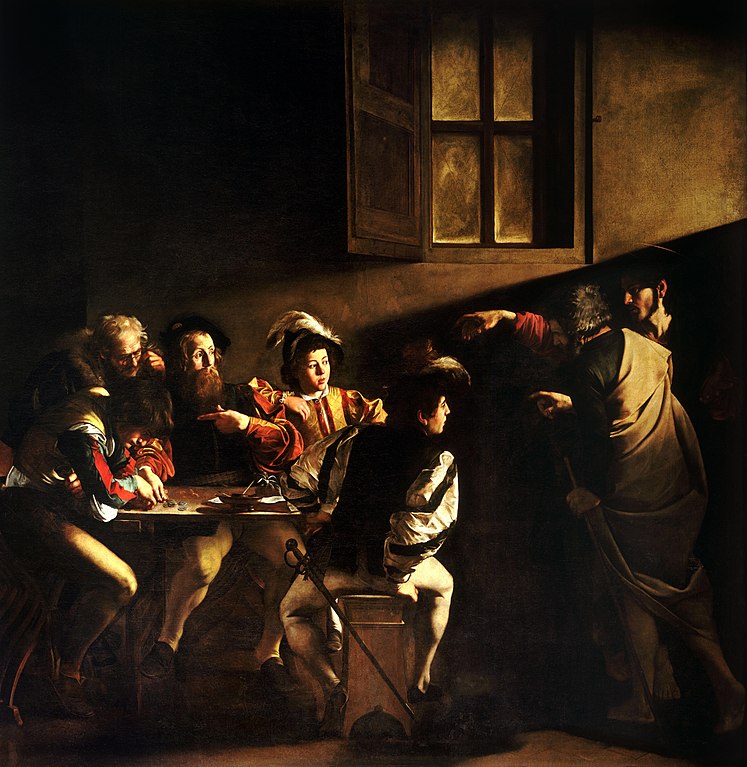
Caravaggio’s ability to capture extremes of light and dark is unparalleled among artists. By 1600, he had completed his magnum opus, The Calling of St. Matthew, which depicts the powerful biblical scene in which Jesus calls Matthew to follow him.
The painting is admired for its exceptional realism and the subjects’ transparent expressions of emotion.
Jesus points at Matthew, who is sitting at a table full of Roman tax collectors, an occupation that was looked down upon by Jews at the time.
Due to the stigma tax collectors had in Jewish culture, Matthew’s expression in this depiction is one of shock at Jesus’ request.
11. Judith Slaying Holofernes – Artemisia Gentileschi
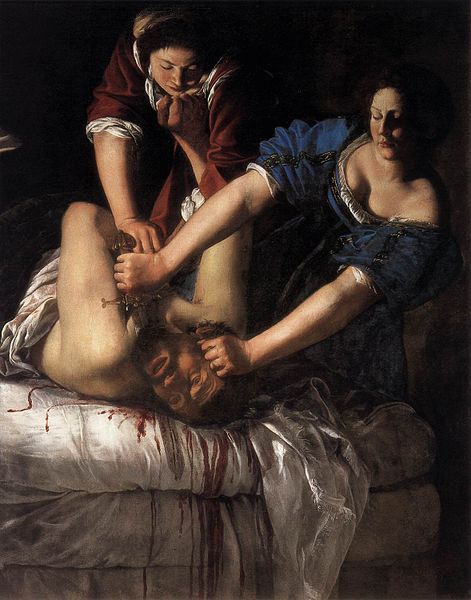
Artemisia Gentileschi, an Italian early Baroque artist, painted Judith Slaying Holofernes in 1612–13; the picture is currently on display in the Museo Capodimonte in Naples.
This painting is widely regarded as one of her most significant achievements. The painting depicts Judith cutting off Holofernes’ head. Inspiration for this section comes from the Old Testament’s apocryphal Book of Judith, in which the Israelite heroine Judith is depicted as the one responsible for the death of the Assyrian general Holofernes.
After the general has passed out from his inebriation, Judith and her maid Abra behead him in this artwork. Between 1613 and 1621, she created another version that is now housed in the Uffizi Gallery in Florence.
12. Burial of St. Lucy – Caravaggio
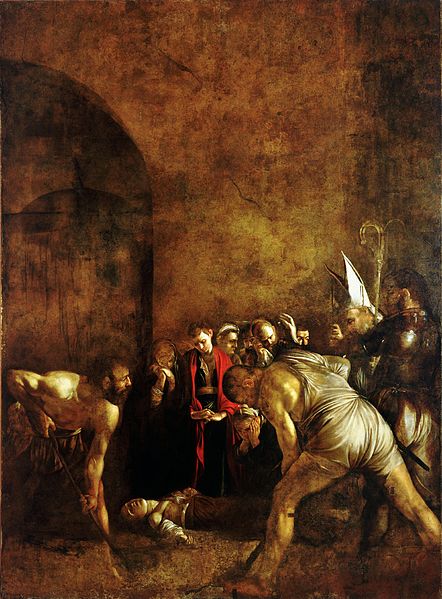
The Italian artist Caravaggio painted “Burial of Saint Lucy.” It’s housed in the Santa Lucia al Sepolcro Church in Syracuse, Sicily.
Saint Lucy gave her fortune to the needy after her mother was miraculously cured, as told in The Golden Legend.
Her own suitor, mistakenly suspecting her of immorality, denounced her as a Christian; she refused to repent, committed her chastity to Christ, and was thus carried off to a brothel.
Something miraculous happened: She stayed still in her place, unaffected by the world around her. The Santa Lucia al Sepolcro Church in Syracuse was constructed over the site where she died after being stabbed in the throat.
Having fled from prison in Malta in 1608, Caravaggio eventually made his way to Syracuse. In Rome, his friend Mario Minniti facilitated the commissioning of the here-exhibited altarpiece.
It was commissioned by the Franciscan church of Santa Lucia al Sepolcro in 1608, and completed by Caravaggio the same year. The fact that St. Lucy was the patron saint of Syracuse and was buried under the church influenced the decision to focus on her life and times as a central theme.
13. The Battle of San Romano – Paolo Uccello
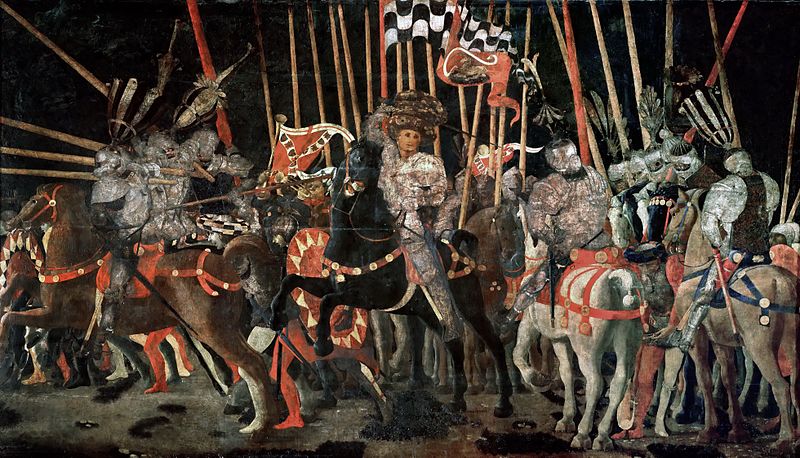
Paolo Uccello, a Florentine artist, created a triptych titled The Battle of San Romano in 1432, representing the conflict between Florentine and Sienese armies.
They are noteworthy because they are a rare example of a large-scale secular commission, and they show how linear perspective was used in early Italian Renaissance art. The paintings, done in egg tempera on hardwood panels, are each more than 3 meters in length.
Panels were commissioned by a Florentine Bartolini Salimbeni somewhere between 1435 and 1460, according to the National Gallery.
In the 15th century, the paintings were highly prized; so much so that one was purchased by Lorenzo de’ Medici, who then had the other two paintings stolen and hung in the Palazzo Medici.
There are now three collections housing these works: the National Gallery in London, the Galleria degli Uffizi in Florence, and the Musée du Louvre in Paris.

